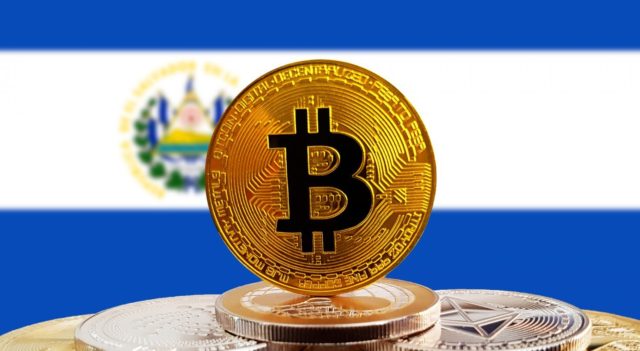This is what you need to know today Wednesday, May 28:
He US Dollar (USD) He stands firm in front of his rivals at the beginning of the European session on Wednesday. The April unemployment rate of Germany will be in the European economic calendar. In the second half of the day, the US Treasury will carry out a 5 -year bond auction and the Federal Reserve (FED) will publish the minutes of its May monetary policy meeting.
US dollar price this week
The lower table shows the percentage of the US dollar change (USD) compared to the main currencies this week. American dollar was the strongest currency against the Japanese yen.
| USD | EUR | GBP | JPY | CAD | Aud | NZD | CHF | |
|---|---|---|---|---|---|---|---|---|
| USD | 0.41% | 0.28% | 1.21% | 0.68% | 0.88% | 0.34% | 0.70% | |
| EUR | -0.41% | -0.13% | 0.83% | 0.27% | 0.47% | -0.07% | 0.29% | |
| GBP | -0.28% | 0.13% | 0.66% | 0.40% | 0.60% | 0.06% | 0.42% | |
| JPY | -1.21% | -0.83% | -0.66% | -0.52% | -0.34% | -0.92% | -0.50% | |
| CAD | -0.68% | -0.27% | -0.40% | 0.52% | 0.21% | -0.34% | 0.02% | |
| Aud | -0.88% | -0.47% | -0.60% | 0.34% | -0.21% | -0.57% | -0.18% | |
| NZD | -0.34% | 0.07% | -0.06% | 0.92% | 0.34% | 0.57% | 0.36% | |
| CHF | -0.70% | -0.29% | -0.42% | 0.50% | -0.02% | 0.18% | -0.36% |
The heat map shows the percentage changes of the main currencies. The base currency is selected from the left column, while the contribution currency is selected in the upper row. For example, if you choose the US dollar of the left column and move along the horizontal line to the Japanese yen, the percentage change shown in the box will represent the USD (base)/JPY (quotation).
In the first Asian session on Wednesday, the New Zealand Bank reservation (RBNZ) announced that it cut the policy rate at 25 basic points (PBS) up to 3.25%. This decision was in line with the market expectation. The RBNZ decreased down the projection of the policy rate by September from 2025 to 3.12% from 3.23%. The interim governor of the RBNZ, Christian Hawkesby, said at the press conference that the message they want to convey is that they are not scheduled for policy movements and pointed out that inflation is within its target range. After losing almost 0.9% on Tuesday, NZD/USD It rose slightly after the RBNZ event and was finally increasing by increasing more than 0.2% in the day above 0.5950.
He USD index He won about 0.6% on Tuesday, since the action in bond and shares markets reflected an improved feeling around the US economy. The 10 -year -old 10 -year -old American bonus performance fell more than 1% in the day, reflecting a healthy demand, while the S&P 500 index won more than 2%. The USD index remains in positive territory above 99.50 in the European morning.
Reuters reported Tuesday that the Japan Ministry of Finance plans to adjust the composition of its bond issuance plan by reducing the broadcast of super long term for the current fiscal year that ends in March 2026. Meanwhile, the governor of the Bank of Japan (Boj), Kazuo Ueda, repeated on Wednesday that the ongoing tariff negotiations between the United States and Japan create uncertainty. After climbing more than 1% on Tuesday, USD/JPY Fluctuate in a narrow channel above 144.00 in the European session on Wednesday.
EUR/USD He lost about 0.5% on Tuesday and erased the profits he recorded at the beginning of the week. The torque is maintained under a modest bearish pressure and descends to 1,1300 early on Wednesday.
GBP/USD It remains down and quotes below 1,3500 after closing in negative territory on Tuesday.
Market optimism made it difficult for Gold You will find demand on Tuesday. After a loss of more than 1%, gold seems to have stabilized slightly above $ 3,300 in the European session on Wednesday.
Fed Faqs
The monetary policy of the United States is directed by the Federal Reserve (FED). The Fed has two mandates: to achieve prices stability and promote full employment. Its main tool to achieve these objectives is to adjust interest rates. When prices rise too quickly and inflation exceeds the objective of 2% set by the Federal Reserve, it rises interest rates, increasing the costs of loans throughout the economy. This translates into a strengthening of the US dollar (USD), since it makes the United States a more attractive place for international investors to place their money. When inflation falls below 2% or the unemployment rate is too high, the Federal Reserve can lower interest rates to foster indebtedness, which weighs on the green ticket.
The Federal Reserve (FED) celebrates eight meetings per year, in which the Federal Open Market Committee (FOMC) evaluates the economic situation and makes monetary policy decisions. The FOMC is made up of twelve officials of the Federal Reserve: the seven members of the Council of Governors, the president of the Bank of the Federal Reserve of New York and four of the eleven presidents of the regional banks of the Reserve, who exercise their positions for a year in a rotary form.
In extreme situations, the Federal Reserve can resort to a policy called Quantitative Easing (QE). The QE is the process by which the Fed substantially increases the flow of credit in a stuck financial system. It is a non -standard policy measure used during crises or when inflation is extremely low. It was the weapon chosen by the Fed during the great financial crisis of 2008. It is that the Fed prints more dollars and uses them to buy high quality bonds of financial institutions. The one usually weakens the US dollar.
The quantitative hardening (QT) is the inverse process to the QE, for which the Federal Reserve stops buying bonds from financial institutions and does not reinvote the capital of the bonds that it has in portfolio that they expire, to buy new bonds. It is usually positive for the value of the US dollar.
Source: Fx Street
I am Joshua Winder, a senior-level journalist and editor at World Stock Market. I specialize in covering news related to the stock market and economic trends. With more than 8 years of experience in this field, I have become an expert in financial reporting.





